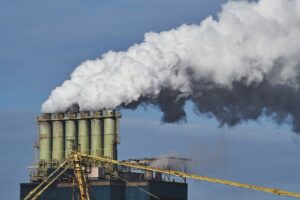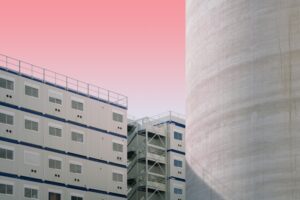
How to Make Industrial Facilities More Climate Resilient Amidst Rising Environmental Risks?
As climate change accelerates, industrial facilities around the world are increasingly facing rising environmental risks. From extreme weather events like floods, heatwaves, and hurricanes to long-term challenges such as rising sea levels and resource scarcity, businesses must adapt to these changing conditions.
This article will explore practical steps that industrial facilities can take to mitigate environmental risks, safeguard their operations, and future-proof their infrastructure.
Why is Climate Resilience Important for Industrial Facilities?
Climate resilience refers to the ability of a facility to anticipate, prepare for, respond to, and recover from adverse climate-related events. With increasing global temperatures and unpredictable weather patterns, businesses need to make their operations more resilient to avoid interruptions, financial losses, and damage to their reputation.
For industries such as manufacturing, energy, and logistics, climate risks such as water scarcity, flooding, and power disruptions can impact production schedules, supply chains, and safety standards.
Key Strategies to Enhance Climate Resilience in Industrial Facilities
1. Climate-Resilient Design and Infrastructure
The first step toward building climate-resilient industrial facilities is to integrate climate considerations into building design and infrastructure planning.
- Flood protection: Industrial buildings in flood-prone areas should incorporate flood barriers, raised foundations, and drainage systems to prevent water from entering critical areas.
- Heat-resistant materials: Choosing materials that can withstand extreme temperatures or heat waves is essential. For example, reflective roofing materials or insulation can help reduce heat absorption and improve energy efficiency.
- Wind-resistant structures: In areas prone to high winds or cyclonic activity, reinforced structures are necessary to prevent damage to roofs, walls, and other vulnerable parts of the building.
These design changes not only reduce risks but also contribute to energy efficiency and cost savings over time.
2. Water Management and Conservation
Water scarcity is becoming an increasing concern, especially in areas that are already struggling with water availability. Industrial facilities must adopt water management practices to reduce consumption and enhance sustainability.
- Rainwater harvesting: Industrial facilities can set up systems to collect and store rainwater, which can be used for non-potable purposes like irrigation, cooling systems, and cleaning.
- Water-efficient technologies: The installation of water-efficient machinery and processes can reduce overall water usage. Technologies like water recycling and filtration systems allow for reusing water in production cycles, minimizing waste.
- Storm water management: For industrial facilities located in flood-prone regions, proper stormwater management systems are vital to prevent runoff and potential flooding.
These initiatives help facilities use water more efficiently while mitigating the impact of climate change.
3. Energy Efficiency and Renewable Power
Energy consumption is one of the largest contributors to greenhouse gas emissions, making energy efficiency a critical aspect of climate resilience. Industrial facilities must optimize their energy use to reduce reliance on fossil fuels and lower their carbon footprint.
- Solar power integration: In sunny regions, such as parts of India, solar panels can be integrated into the facility’s design to reduce reliance on grid power and lower electricity costs. Industrial-scale solar power can provide a renewable and sustainable energy source for operations.
- Energy-efficient equipment: Upgrading to energy-efficient machinery and appliances, such as LED lighting, high-efficiency HVAC systems, and advanced production machinery, helps reduce overall energy consumption.
- Energy storage: To ensure energy security, particularly during extreme weather events, industrial facilities can invest in energy storage solutions like battery storage systems to store excess energy for use during periods of low production.
By investing in these measures, industrial facilities can reduce their carbon footprint while ensuring continuity in operations.
4. Adaptation of Supply Chains
Supply chains are highly vulnerable to climate-related disruptions, such as floods, transportation blockages, and extreme weather events. To make industrial facilities more climate-resilient, businesses must adopt strategies that make their supply chains more flexible and adaptable.
- Diversified sourcing: Relying on multiple suppliers and geographical regions helps mitigate risks associated with localized climate impacts. By diversifying suppliers, businesses can maintain a steady flow of raw materials, even in the event of a regional disaster.
- Digital monitoring: Implementing real-time monitoring systems that track weather patterns, inventory levels, and shipping logistics can help businesses anticipate disruptions and adjust production schedules accordingly.
- Alternative transport routes: Industrial facilities can plan for alternate transportation routes and methods to avoid weather-related delays in the movement of goods.
By building a more resilient supply chain, businesses can continue production without major disruptions from climate-related events.
5. Green Building Certifications and Standards
To ensure long-term climate resilience, industrial facilities can work towards achieving green building certifications such as LEED (Leadership in Energy and Environmental Design) or IGBC (Indian Green Building Council). These certifications not only promote energy and water efficiency but also encourage the use of sustainable building materials, waste management practices, and indoor environmental quality.
Adopting sustainable building practices helps industrial facilities reduce their environmental impact while improving their resilience to climate change. It also enhances their brand image, attracting investors and customers who prioritize sustainability.
6. Employee Safety and Health
Ensuring the safety of workers during extreme weather events is a critical part of climate resilience.
Industrial facilities should be equipped with robust health and safety protocols, including:
- Emergency preparedness plans for workers in case of floods, fires, or heatwaves.
- Climate-resilient protective gear and infrastructure, such as cooling systems for workers in extreme heat.
- Training and awareness programs to ensure that employees are well-prepared for climate-related emergencies.
Prioritizing worker safety ensures that industrial operations can continue smoothly, even during challenging environmental conditions.
Invest in Climate Resilient Infrastructure for a Sustainable Future
The construction of climate-resilient industrial facilities has become a necessity. By adopting sustainable practices, investing in energy-efficient systems, and improving infrastructure, industries can mitigate the risks posed by climate change and ensure operational continuity.
For businesses looking to design and construct climate-resilient facilities, VMS Consultants provides engineering, architecture, and project management services that focus on sustainability and resilience.
Contact us today to create a facility that can thrive in the face of environmental challenges.





